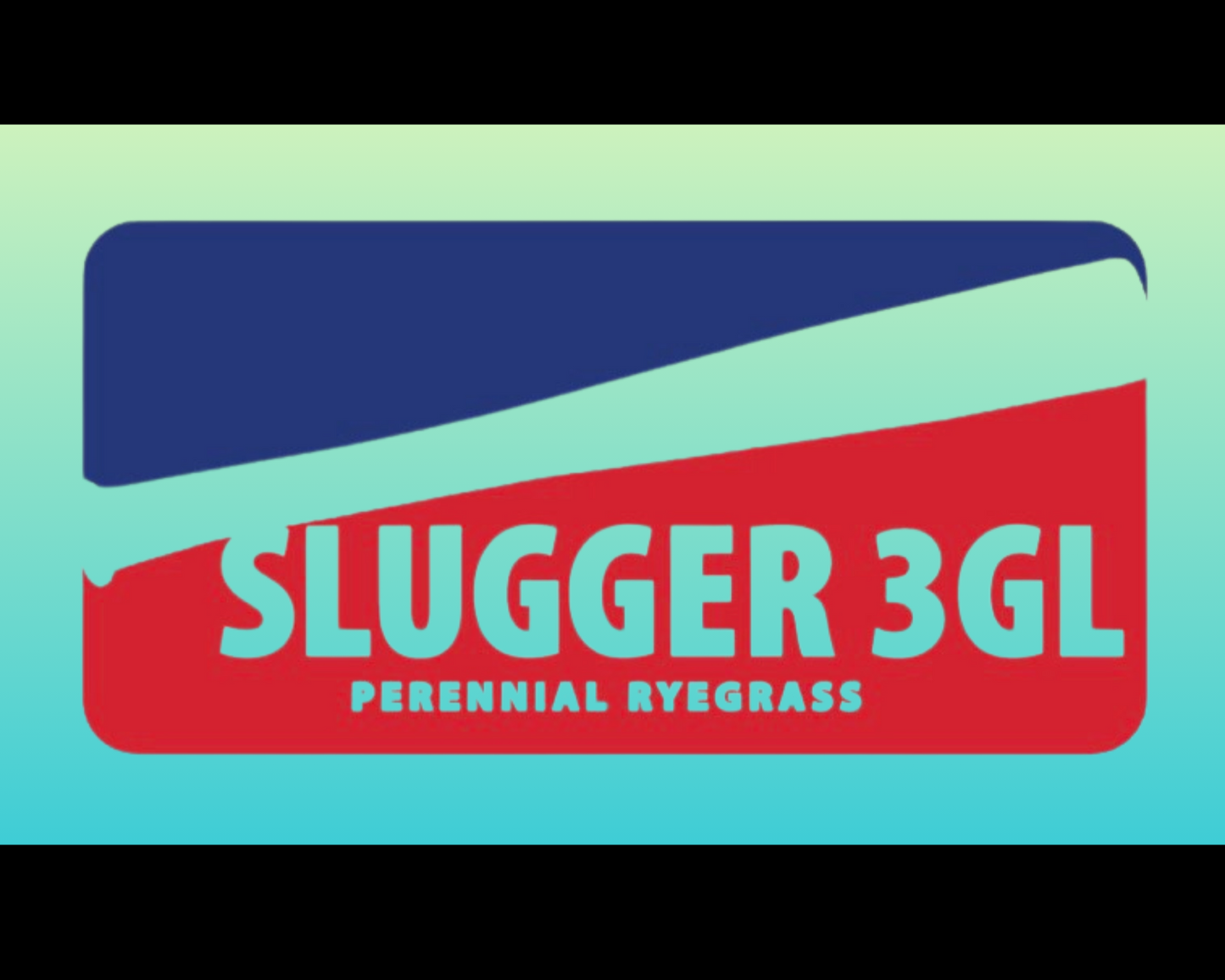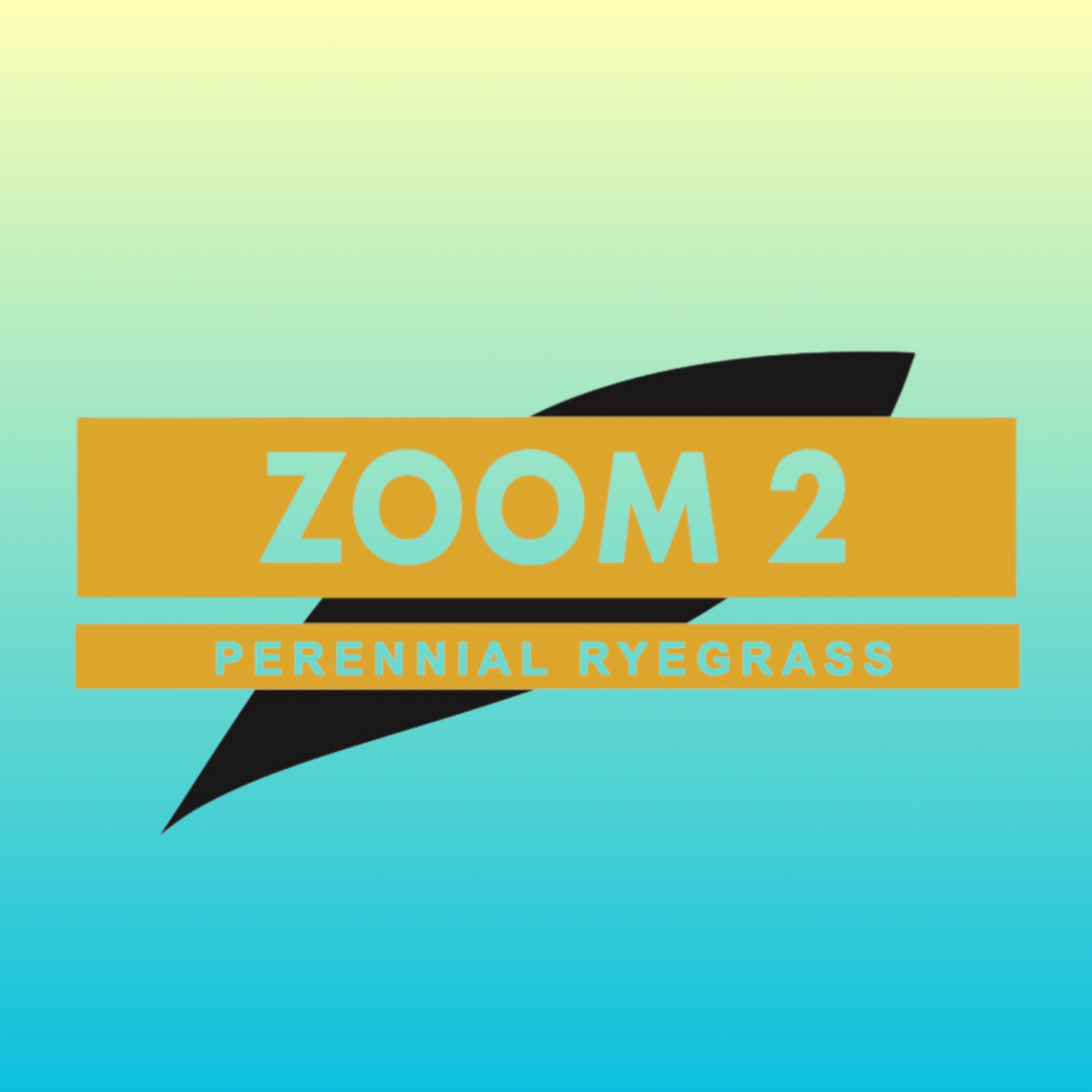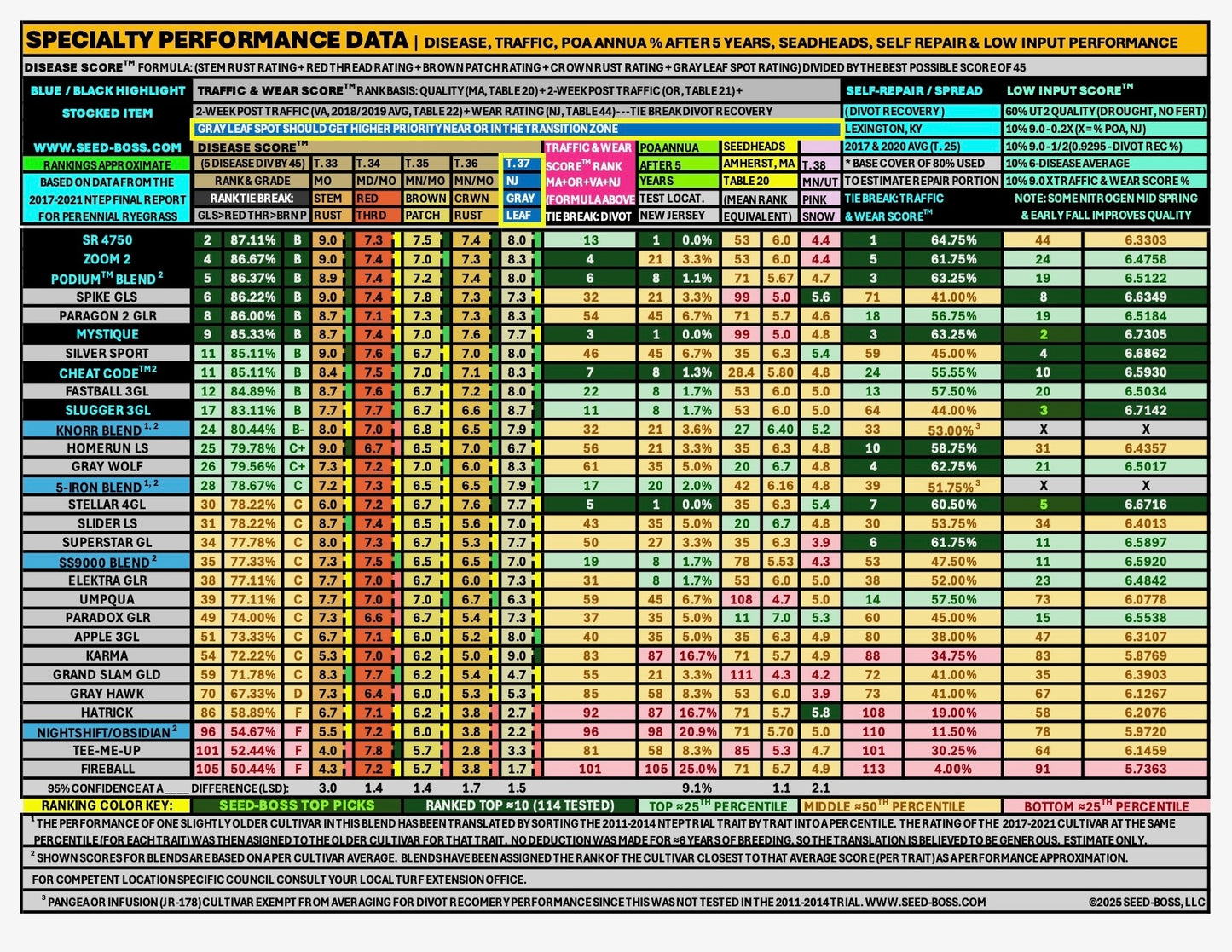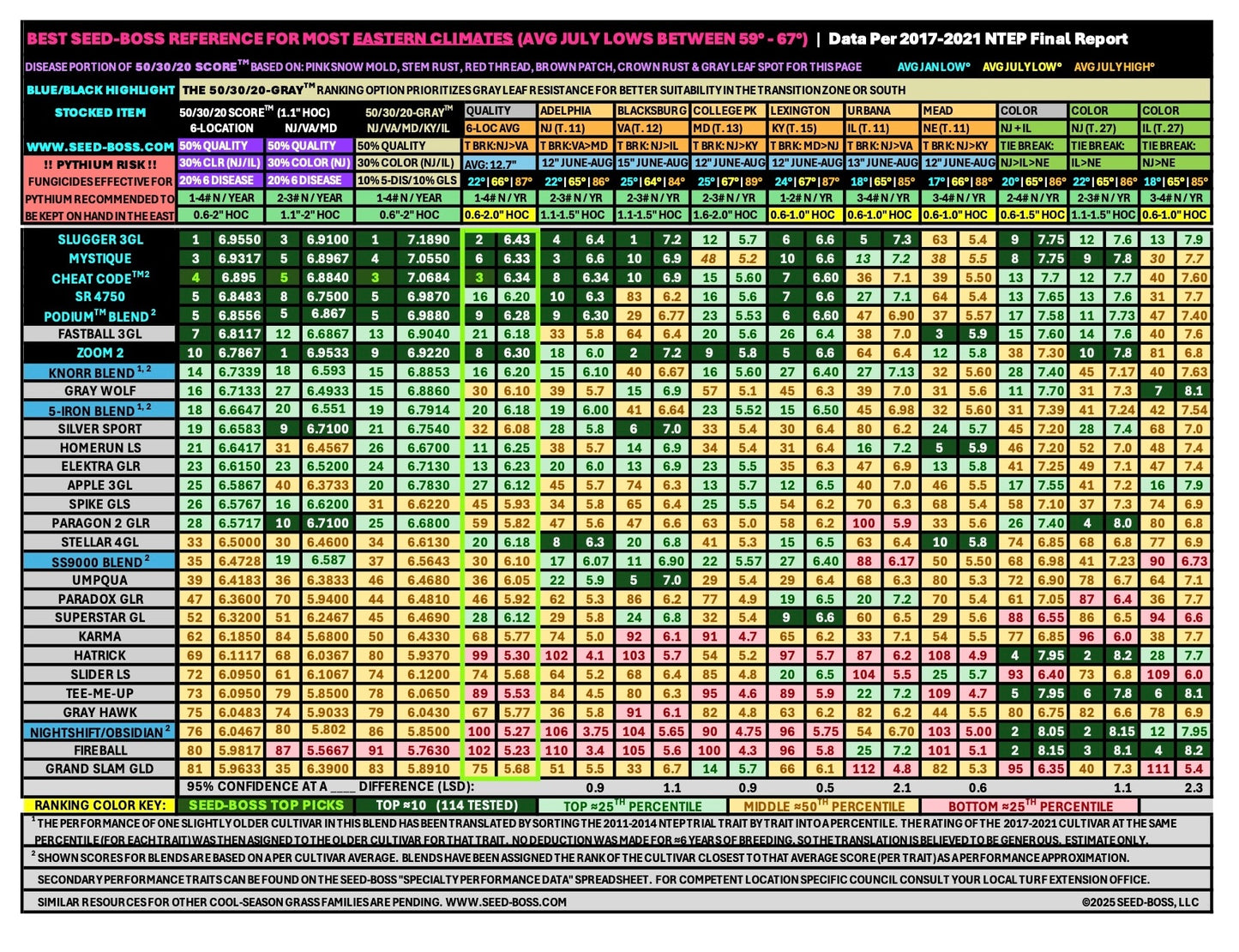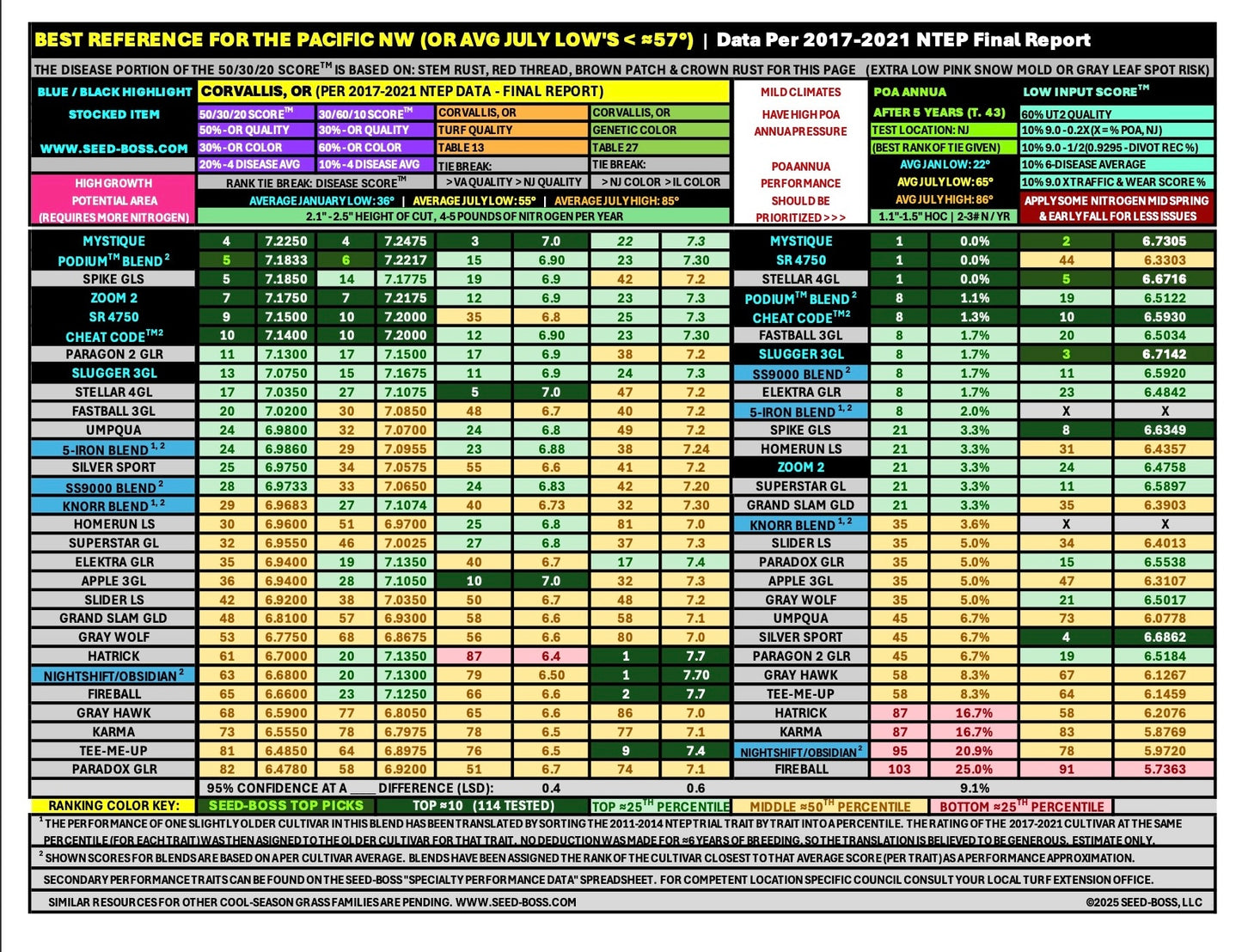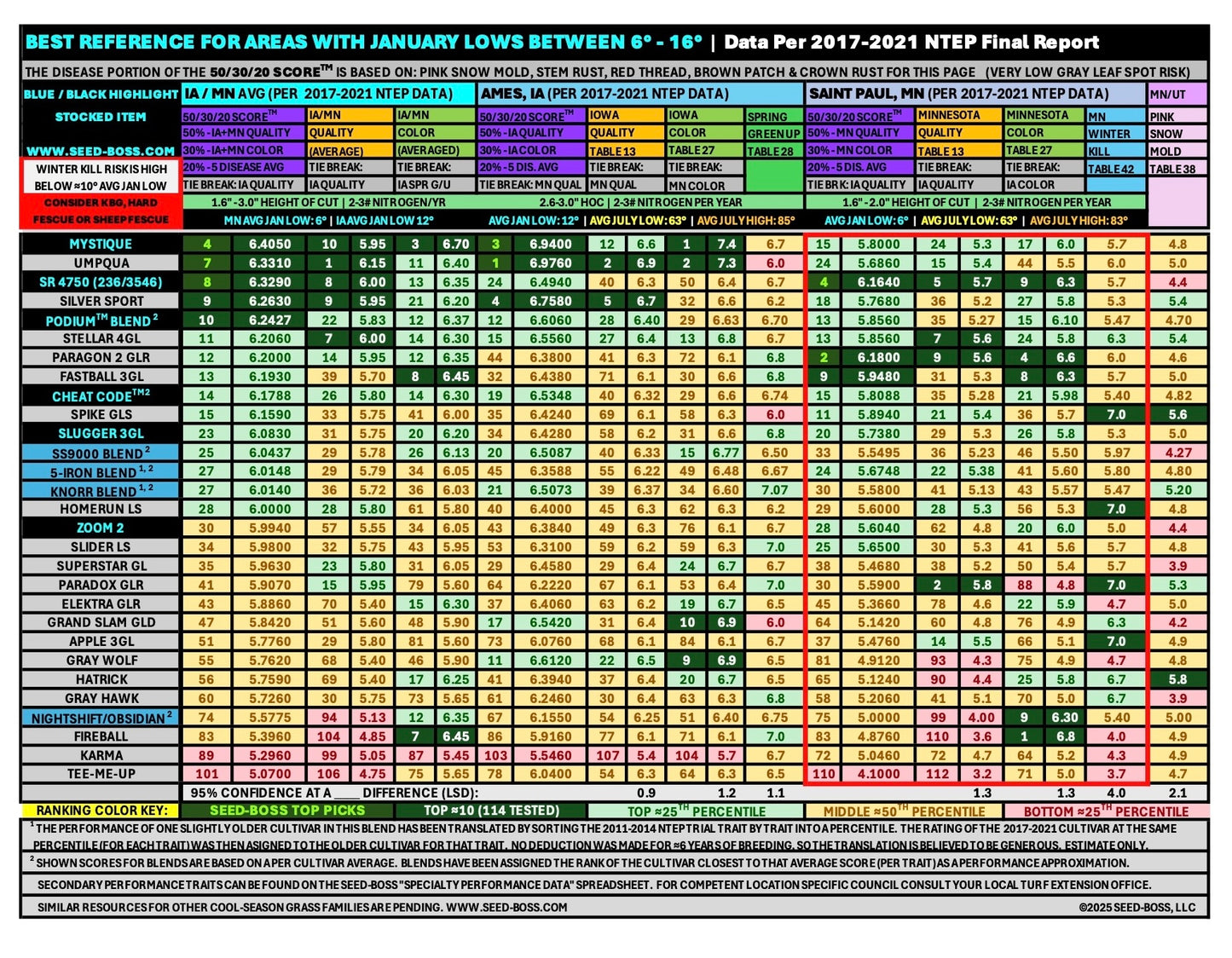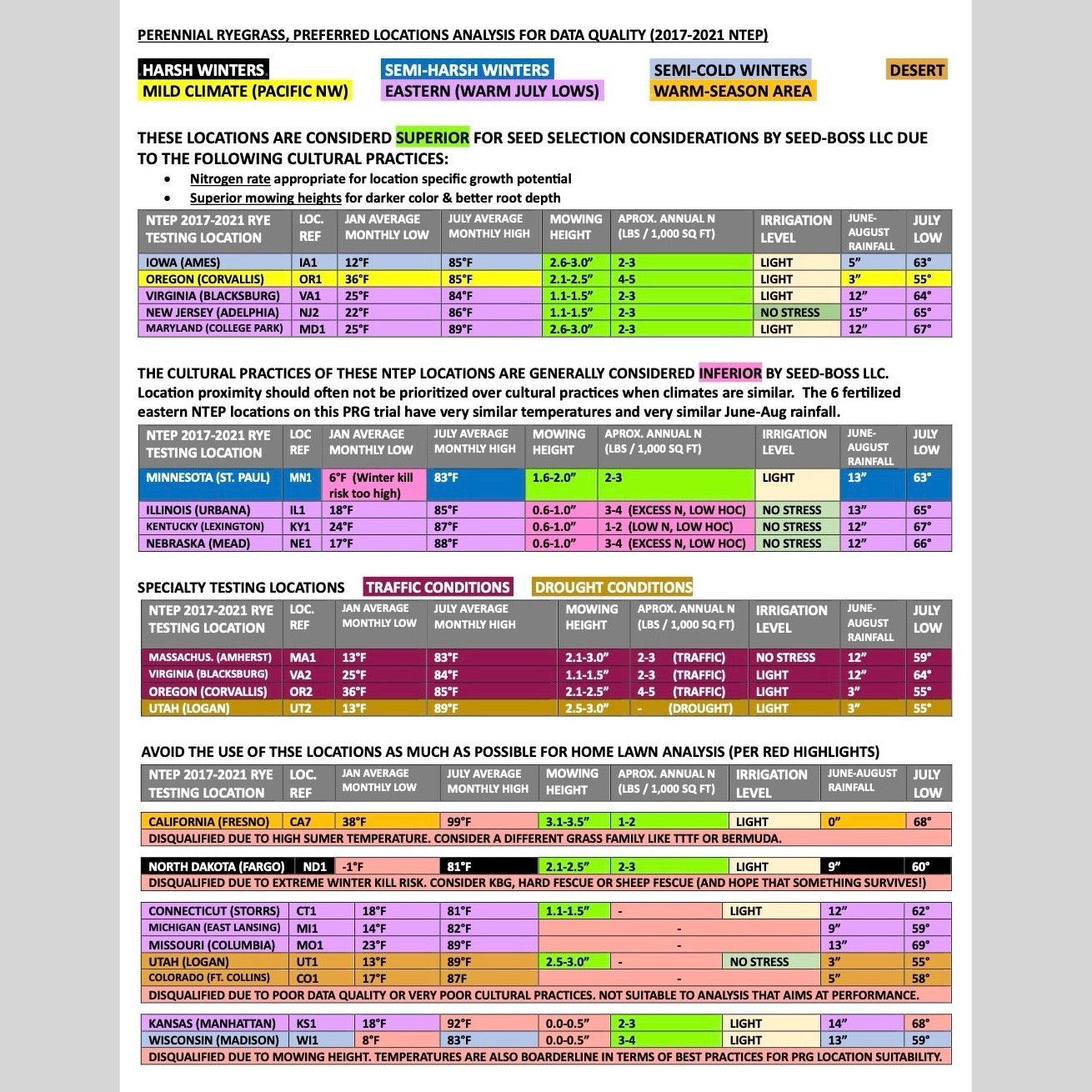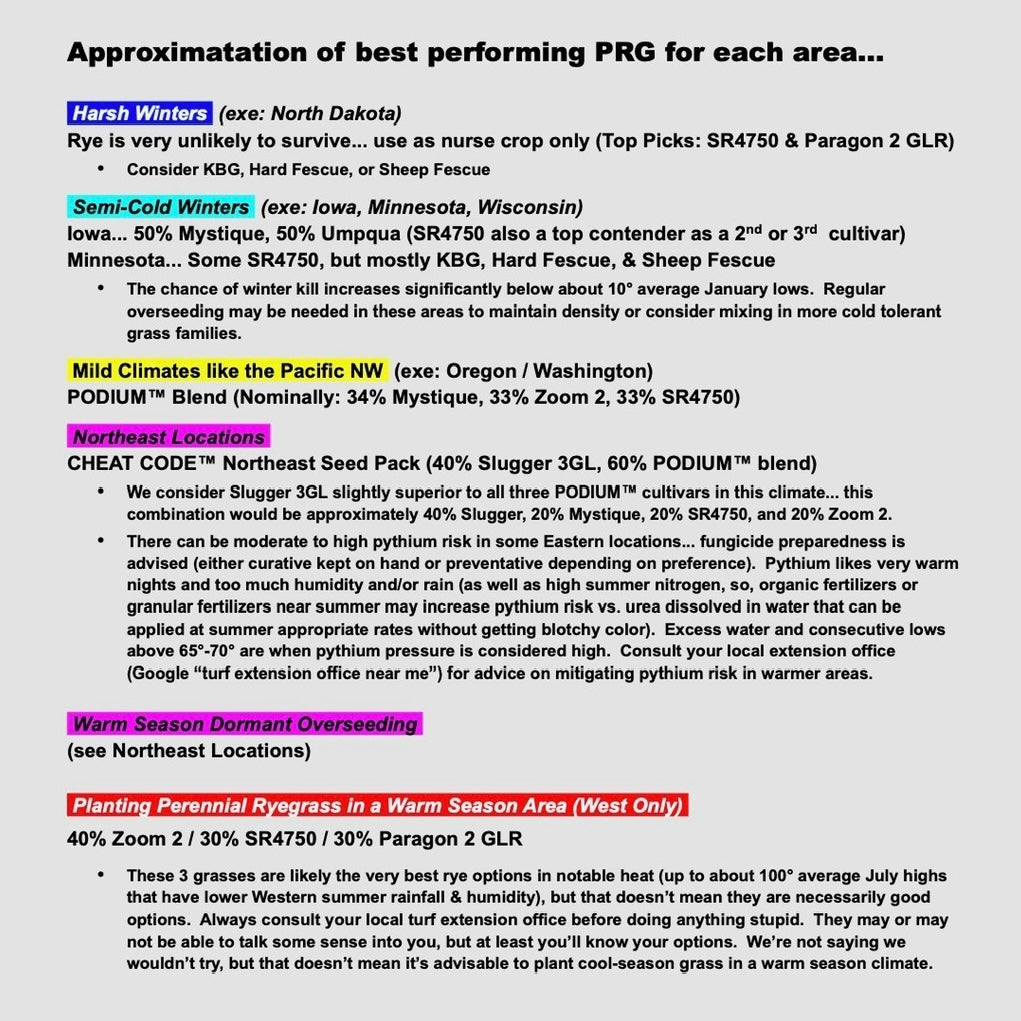SEED-BOSS
(Bulk / Acreage) Perennial Ryegrass Grass Seed
(Bulk / Acreage) Perennial Ryegrass Grass Seed
Couldn't load pickup availability
BULK PERENNIAL RYEGRASS GRASS SEED
Free Pallet Delivery w/ Lift Gate(*) & Free Nitrogen Audit with all bulk orders(**).
* Allow approximately 2-3 weeks for single cultivar varieties like Mystique, Zoom2, or Slugger 3GL (Shortages expected for SR4750, and possibly PODIUM™ or CHEAT CODE™). For blend lead times, please email, call, or text first for availability. Free shipping within the continental 48 United States only. Islands, Alaska or Hawaii may have a freight surcharge (but not necessarily). We do not offer flat rate international pallet shipping at this time.
Half Pallet = 1,000 Pounds (Bagged in 50 pound bags). This quantity seeds about 2.5 acres of bare dirt (based on a 9 pound per 1,000 sq ft seeding rate) or approximately 4.5 acres of overseeding (based on a 5 pound per 1,000' seeding rate)
Full Pallet = 2,000 Pounds (Bagged in 50 pound bags). This quantity seeds about 5 acres of bare dirt (based on a 9 pound per 1,000 sq ft seeding rate) or approximately 9 acres of overseeding (based on a 5 pound per 1,000' seeding rate)
** All bulk orders qualify for a free nitrogen audit... see Nitrogen Audit item for details and add $0 option to cart if interested (this is simply a customized recommended nitrogen schedule specific to your property).
Common overseeding seed rates: 3-5 pounds per 1,000' (175-220 lbs / acre)
Common bare dirt seed rates: 7-10 pounds per 1,000' (350-440 lbs / acre)
FREIGHT DETAILS
Pallet will be shipped with standard "Curbside Delivery" option meaning it will be delivered to the end of the driveway or better and someone must be present to sign for the delivery on the delivery day that the carrier will schedule directly with the buyer (business days only). Usually the pallet would be wheeled to just outside the garage, but, if the driver isn't feeling very helpful legally they can stop at the curb and go no further (although relatively rare). Delivery includes lift gate service so no forklift is required to unload the pallet from the truck.
We recommend scheduling or planning to minimize contact with heavy rain and allow enough time to get the seed in a dry location relatively quickly.
Note: The terminal will schedule the delivery day directly with the buyer by phone. If the buyer is not present during the first delivery attempt on the agreed to delivery day, the buyer will typically be responsible for a redelivery fee (around $150). If being home all day would be inconvenient, shipping to a commercial address or freight terminal pickup are other free options available to the buyer upon request. Estes is our primary carrier for most of the country (or Oak Harbor for the West Coast) so if you google "Estes freight terminal near me" that might help determine if terminal pickup would be more convenient than address delivery. For the terminal pickup option, the pallet must be picked up within 2 business days of a ready for pickup notification.
TIPS FOR SUCCESS
-
Seed germination basics:
- Bare dirt is ideal (or at least no thatch)
- Adhere to proper seed rate... too little seed means increased weed pressure and increased erosion risk, and too much seed can mean lesser color and increased risk of disease.
- Rake seed in w/ a Groundskeeper 2 rake (or slit seed if you can)... grass seed sitting on the surface will be unlikely to germinate
- Keep soil moist and never dry or soaked until germination... several light waterings per day are usually necessary... I physically touch the dirt prior to watering most of the time... often soil is already moist and more hours can pass before water is needed.
- Water for enough days to germinate your slowest germinating seed.
- A germination rate of 50% starts around 50° soil temps for most cultivars... seeding before soil is warm enough may reduce germination. I like to aim for 50-55° soil temps for spring seeding (slow germination but better summer hardiness) or let soil dip to about 60-65° (or when regular light rain is expected). It's important not to seed too late for fall seeding especially on bare dirt because if soil cools too much grass seed won't germinate at all.
- For spring seeding, regular early nitrogen is extra important to maximize establishment prior to summer conditions. 1/2# of N per 1,000 square feet at seeding as well as 1/2# of N about every 3-4 weeks for at least a few months can get the grass off to a good start (Note: 1.09# of urea dissolved in water / 1,000' = 1/2# of N). The larger the droplets the better... I like a TeeJet TTI11004 spray tip for applying fertilizer.
- After germination has concluded, the grass only needs to be watered to the point of survival... 1 fairly light watering every day or two is likely enough water. If you see the grass start to wilt more water is needed.
- Once the grass is a few weeks old, not enough water is usually better than too much, since disease loves excess water! We recommend owning a soil probe; If you aren't sure if you should water, simply pull a soil core or two... cores should be quite dry before water is actually needed. Water between 0.5"-0.62" per watering with at least a few dry down days between waterings for best results. Time of day matters with water... watering should be concluded around the time that sunlight first hits an area (often some time before 8:00AM). Evening & night watering maximizes disease pressure and watering during daylight hours can be much less efficient due to excessive evaporation prior to percolation.
- With rare exception, I recommend avoiding potassium, micronutrients, and phosphorus like the plague and just apply nitrogen to get the best possible turf quality with the least amount of problems and work. Foliar iron is ok, but I personally don't use it. Before you assume a soil applied product is going to improve your soil, we recommend taking a cold shower, slap yourself in the face (if necessary), and then binge Turfgrass Epistimology study reviews on YouTube until the urge to purchase a given product subsides.
- I believe in full renovations rather than overseeding when a major upgrade is desired. Overseeding yields comparatively poor germination rates and the original (generally less desirable) grasses will largely survive and water down your results. The value for time with full renovation is there in my experience.
-
Observe the 1/3 rule with sharp blades. An All American Sharpener style grinding jig is great if rotary mowing, and a flat file can be used to push the burr off for that last bit of sharpness. The 1/3 rule is per day or two... not per pass. If you can't mow frequently enough to observe the 1/3 rule, bringing the height of cut up allows more time between mows. 1/3 of 4" allows more growing time than 1/3 of 2".
-
If the ground is mushy to the touch, try to wait for a dryer day to mow if possible. Most compaction happens when ground is too wet. The easiest way to cure compaction is often to prevent it, but of course, sometimes compromises have to be made to keep grass height under control.
-
Where there's lots of shade, mow higher or consider TTTF or fine fescue.
-
Where there's traffic, more nitrogen is needed. Where there's shade, less nitrogen is needed.
-
Nitrogen rate should match growth potential. If it's growing slowly due to heat or cold, lower rates should be applied or none at all. Avoid medium or heavy nitrogen applications in summer to reduce disease. In the most mild of areas sometimes the highest growth potential (and the most N) happens during summer. If you see dollar spot, red thread, or rust, those will generally improve when nitrogen is added as long as temperature or light isn't the limiting nutrient. Heat loving diseases that prefer high nitrogen include brown patch, pythium, and leaf spot. Try to take nitrogen timing and rate seriously to reduce disease pressure.
-
Approximately 1.0% annual ryegrass is common in perennial rye when black light root testing is how the “other crop” was determined but when the same seed is genetically tested usually the majority of the other crop ends up actually being perennial ryegrass because a portion of PRG roots fluoresce under a black light. For good measure we still recommend not going too long between mowing during seedhead stage for the first year to halt the life cycle of any possible annual ryegrass, so no field conditions year one.
- Perennial rye has unusually nasty woody seed head stocks that can leave a yellow hue to your lawn for months and months if not addressed. An annual "seedhead reset" can greatly reduce the effects of this undesirable trait of ryegrass (see below). A seedhead reset is moderately stressful to the lawn and ideally should not be attempted under times of high disease pressure or other major stresses.
How to do a seed head reset:
- Once the annual seed head stage starts each year, mow at the usual mowing height for about a month
- Then, mow often (with very sharp blades) and gradually reduce the mowing height over the next few weeks to cut as much of the seed head stock off as possible, but make sure you stay above the crown of the plant to ensure less stress while the plant regenerates.
- About 1 week before the last mow, apply approximately .3# of nitrogen and make sure the lawn is receiving around 1" of water per week via rainfall and irrigation (early AM water is efficient and minimizes disease pressure... around 1/2" of water every 3-4 days is an approximation for most areas during drought.)
- Return to your original cutting height. The seed head stocks should be hidden below soft new blades of grass and the straw colored seedhead stocks should be well hidden from view.
Disclaimer: For any details relevant to decision making related to grass seed, we recommend referencing NTEP directly when possible. This resource is intend as a user friendly supplement to NTEP data (NOT A REPLACEMENT). Comparative gaps beyond LSD (least statistical difference) on NTEP offer a 95% confidence level. When LSD is not available, no specific confidence level is possible or implied... these are simply the raw numbers. In general the higher the gap, the higher the confidence and small gaps should be considered as equals in most cases. This website is constantly being improved for accuracy to the best of my ability... if you notice an error or inconsistency or don't understand where certain came from, please don't hesitate to bring it to my attention via email or text. This website almost certainly does contain unintentional typos or errors and possibly out of date information (for example: when brands change the cultivars in their blends).
Seed-Boss makes no guarantee of performance in your climate or under your management practices. Minimizing stress on the grass tends to create the healthiest and best looking grass - which means food (occasional nitrogen), an occasional 1/2" water during drought, sun light, sharp blades, observing the 1/3 rule, etc. All grass seed sold has been tested for germination of at least 85%, and typically at least 90%... if the grass seed does not germinate the buyer acknowledges improper seed to soil contact, improper soil moisture during germination phase, and/or inappropriate soil temperatures and agrees to not blame seed (that was tested as good).
If you notice anything inaccurate or that could be improved for accuracy, please email us at SUPPORT@SEED-BOSS.COM. Our aim is the highest degree of accuracy possible and that process includes peer review.





